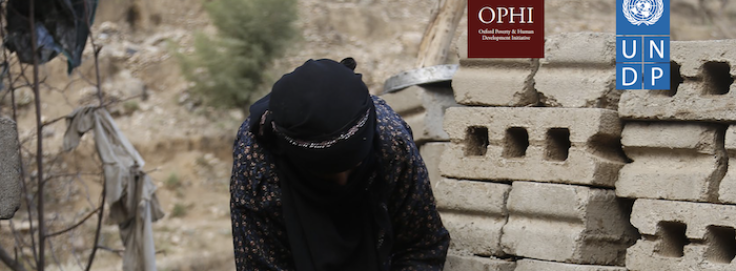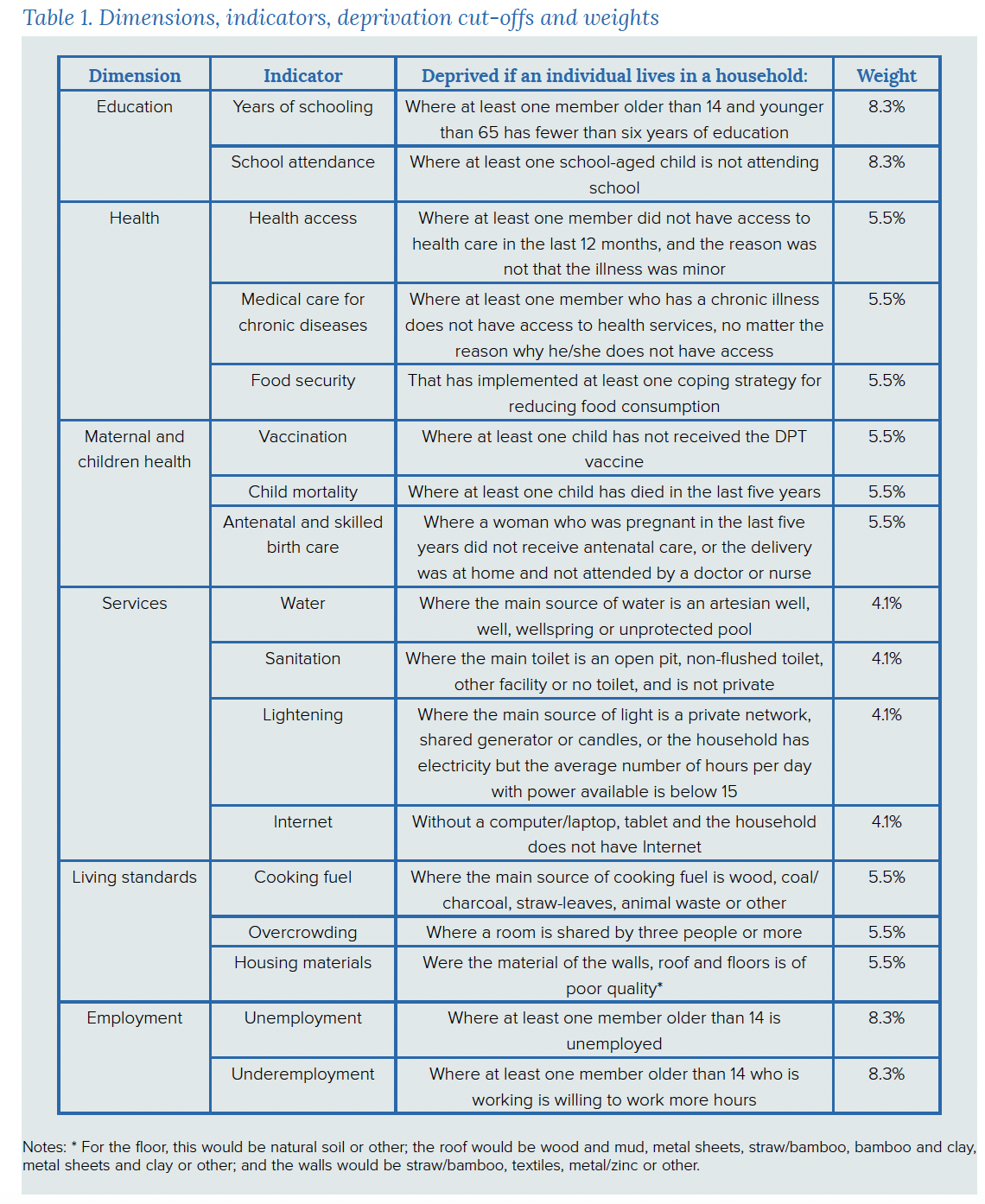
Search
Measuring Multidimensional Poverty in Yemen

This report represents a significant contribution to measuring and monitoring Yemen’s progress in achieving the Sustainable Development Goals, specifically the first goal and target 1.2, on reducing “at least by half the proportion of men, women and children of all ages living in poverty in all its dimensions according to national definitions” by 2030.
The report is Yemen´s first on the calculation of the sub-national Multidimensional Poverty Index (MPI) based on the 2021 Yemen Human Development Survey. It covers the sub-national level (representative regions), urban and rural areas of Al Bayda, Ta’iz, Hadramawt, Shabwah, Aden, Lahj, Ma’rib, Al Maharah and Ad Dali’ governorates. A detailed breakdown by MPI indicators for each group makes the report a powerful policy tool to benchmark progress and inform planning and policy design.
Multidimensional poverty
The national MPI for Yemen is based on the Alkire-Foster method of multidimensional poverty measurement. It uses the results of the 2021 Yemen Human Development Survey (YHDS) and comprises six dimensions (education, health, child and maternal health, services, living standards and employment) and 17 indicators.
The dimensions and indicators capture deprivations for individuals and households. Indicators were computed at the household level, assuming that all household members equally share achievements and deprivations. Statistical tests were performed to validate the measure’s robustness and the significance of findings at the national level and for governorates.
The YHDS included a sample of 1,681 households. It was the first face-to-face, representative household survey since the onset of conflict in Yemen. It aimed to provide a detailed overview of welfare, food security and human development indicators, and to enable intrahousehold analysis. Data were collected between April and September 2021, including on education, health, employment status and living conditions in areas under the Internationally Recognized Government (Southern Yemen). The survey provided regionally representative data on Al Bayda, Ta’iz, Hadramawt, Shabwah, Aden, Lahj, Ma’rib, Al Maharah and Ad Dali’ governorates.
Results
Results indicated that 82.7 percent of people were living in multidimensional poverty, or more than 8 in every 10 people based on the regions surveyed. The intensity of poverty, or the average number of deprivations faced by multidimensionally poor people, was 46.7 per cent. On average, a poor person experienced more than 45 percent of possible weighted deprivations. The national MPI, which is the product of the incidence (percentage of people living in multidimensional poverty) and intensity (average number of deprivations faced by poor people) of multidimensional poverty, was 0.386. Multidimensionally poor people faced on average 38.6 percent of all possible deprivations, if all individuals were multidimensionally poor and deprived on all indicators.
Poverty tended to be higher in rural areas (89.4 percent) than urban areas (68.9 percent). Ad Dali’ and Al Bayda had the highest incidence of multidimensional poverty. An estimated 40 percent of multidimensionally poor people lived in Ta’iz governorate, which has a large population.
Nationally, years of schooling and sanitation were the two indicators with the largest censored headcount ratios (1) with more than 70 percent of the population deprived on these indicators and multidimensionally poor. In terms of the percentage contribution of each of the 17 indicators to the national MPI, the largest contributors were years of schooling (17.1 percent), followed by cooking fuel (9.1 percent) and sanitation (8.1 percent).
Female-headed households had a lower incidence of multidimensional poverty than male-headed households but the difference was not significant. Households where the head was divorced had a lower incidence of multidimensional poverty compared to other households. By contrast, households where the male head was married to more than one wife had higher levels. The intensity of their poverty was also greater. The incidence of poverty among people living in smaller households was 64.4 percent, compared to 86.4 percent and 91.1 percent for people living in households with five to nine members or more than nine members, respectively. Finally households with members with disabilities had higher levels of multidimensional poverty than households without members with disabilities (86.4 percent compared to 81.2 percent).
Conclusion and recommendations
Yemen’s internal conflict has had a deeply negative impact on the living standards of individuals and households. The country faces high levels of poverty and deprivation, and multiple challenges in guaranteeing access to basic services and opportunities. Deprivations in years of schooling and sanitation are among the worst, with more than 70 percent of the population deprived on these indicators. Important differences between rural and urban areas and governorates reflect how some areas are more affected by ongoing conflict, higher barriers to services or a lack of services altogether. This report recommends establishing a poverty reduction strategy that addresses inadequate access to basic services and enhances economic opportunities.

(1) The percentage of people who are deprived on each indicator and are multidimensionally poor.
Source: UNDP Yemen
















